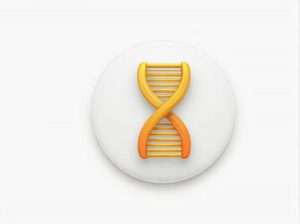The plasma membrane is an essential structure in all living cells acting as a protective barrier that regulates what enters and exits the cell. It maintains cell integrity facilitates communication and supports various biological processes.
To understand how the plasma membrane functions we need to examine its primary composition. This topic will explore the key components of the plasma membrane their roles and how they work together to maintain cellular health.
The Structure of the Plasma Membrane
The plasma membrane is often described using the fluid mosaic model which explains its dynamic and flexible nature. It consists of a bilayer of lipids embedded proteins and carbohydrates that interact to form a semi-permeable structure.
1. Lipids: The Main Building Blocks
The plasma membrane is primarily composed of lipids specifically phospholipids along with cholesterol and other lipid molecules.
a. Phospholipids: The Foundation of the Membrane
Phospholipids form a bilayer which serves as the basic framework of the membrane. Each phospholipid molecule consists of:
- A hydrophilic (water-loving) head which faces outward interacting with the aqueous environment.
- Two hydrophobic (water-fearing) tails which face inward avoiding water and forming a barrier to most molecules.
This arrangement creates a semi-permeable membrane allowing only certain molecules to pass through.
b. Cholesterol: Enhancing Membrane Stability
Cholesterol is another important lipid found within the plasma membrane particularly in animal cells. Its main functions include:
- Regulating membrane fluidity preventing it from becoming too rigid or too flexible.
- Providing structural support ensuring membrane integrity under different temperature conditions.
Without cholesterol the membrane would be too fragile or too permeable disrupting cell function.
2. Proteins: Facilitating Transport and Communication
The plasma membrane contains various proteins that help transport molecules relay signals and support cellular interactions. These proteins are categorized into two main types:
a. Integral (Intrinsic) Proteins
These proteins are embedded within the lipid bilayer often spanning the entire membrane. Their roles include:
- Transport proteins: Form channels or carriers to move molecules like ions glucose and amino acids across the membrane.
- Receptor proteins: Bind to specific molecules (e.g. hormones neurotransmitters) to trigger cellular responses.
b. Peripheral (Extrinsic) Proteins
These proteins are attached to the inner or outer surface of the membrane and function in:
- Cell signaling and communication.
- Supporting the cytoskeleton helping the cell maintain its shape.
- Enzymatic activity speeding up chemical reactions.
3. Carbohydrates: Key to Cell Recognition
Carbohydrates are present on the outer surface of the plasma membrane often attached to proteins (glycoproteins) or lipids (glycolipids).
Functions of Carbohydrates in the Membrane:
- Cell recognition: Helps cells identify each other essential for immune responses.
- Cell adhesion: Facilitates tissue formation by allowing cells to stick together.
- Communication: Assists in signaling processes between cells.
Functions of the Plasma Membrane
The plasma membrane is vital for cell survival and performs several key functions:
1. Selective Permeability
- The membrane controls the movement of substances in and out of the cell.
- Small non-polar molecules like oxygen (O₂) and carbon dioxide (CO₂) can pass freely.
- Large or charged molecules such as glucose and ions require transport proteins.
2. Cell Communication
- Receptor proteins detect signals from hormones and neurotransmitters.
- This allows the cell to respond to external stimuli and coordinate functions.
3. Structural Support
- The plasma membrane anchors the cytoskeleton giving the cell its shape.
- It maintains cell integrity and prevents damage from external forces.
4. Cell Adhesion
- The membrane allows cells to stick together forming tissues and organs.
- This is important for processes like wound healing and immune responses.
How the Plasma Membrane Maintains Homeostasis
To keep the cell’s internal environment stable the plasma membrane uses various transport mechanisms:
1. Passive Transport (No Energy Required)
- Diffusion: Movement of molecules from high to low concentration (e.g. oxygen).
- Facilitated diffusion: Uses transport proteins to move molecules like glucose.
- Osmosis: The diffusion of water across the membrane.
2. Active Transport (Energy Required)
- Uses ATP energy to move substances against their concentration gradient.
- Examples: Sodium-potassium pump proton pump.
3. Endocytosis and Exocytosis
- Endocytosis: The cell engulfs large molecules by wrapping them in a vesicle.
- Exocytosis: The cell expels materials such as hormones or waste products.
The plasma membrane is primarily composed of phospholipids proteins and carbohydrates working together to protect the cell regulate transport and facilitate communication.
Its fluid mosaic structure allows it to be flexible responsive and highly efficient in maintaining homeostasis. Understanding the composition and function of the plasma membrane is essential in fields like biology medicine and biotechnology where cell interactions play a crucial role in health and disease.



